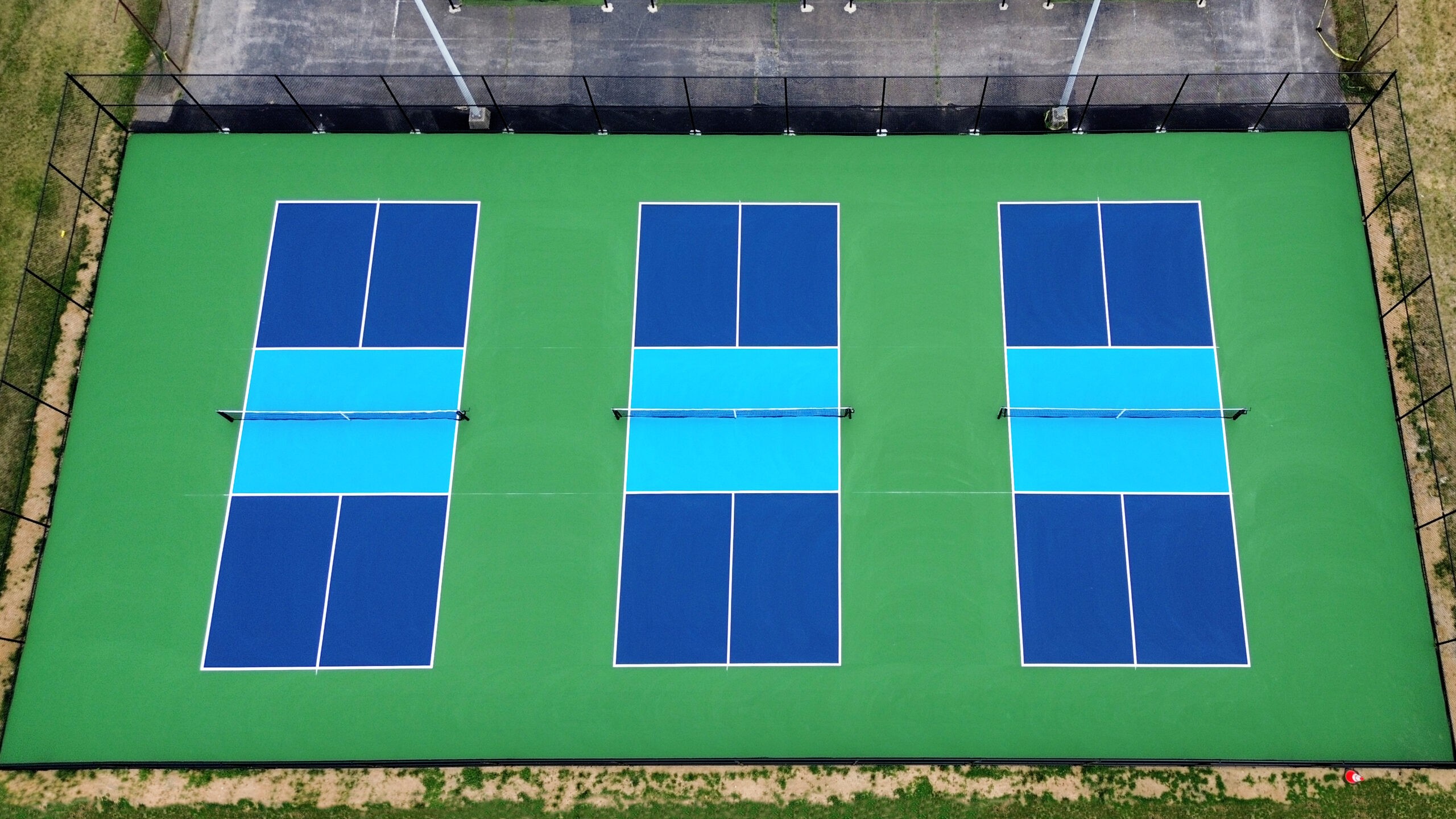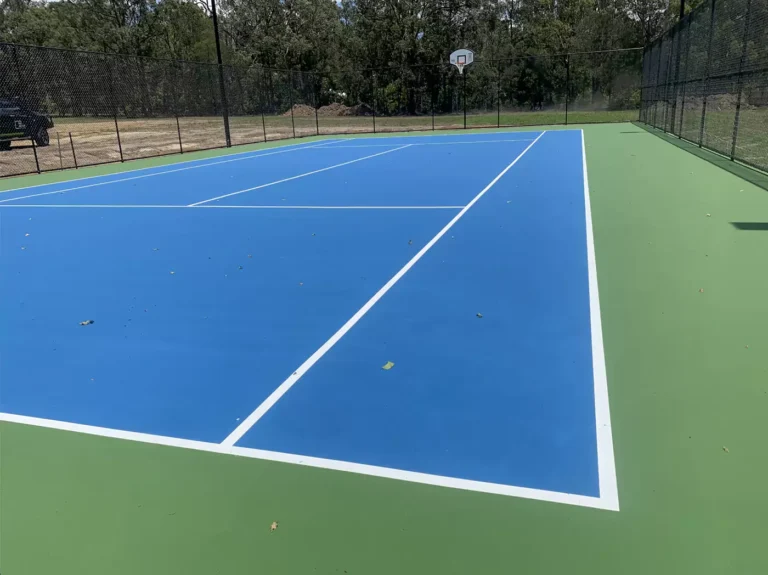Sustainable Practices in Pickleball Court Construction You Ought To Know
As the appeal of pickleball continues to increase, so also does the requirement for lasting practices in court building and construction. The effect of these techniques extends much past the court itself.
Choosing Eco-Friendly Products
Choosing eco-friendly materials is an important action in the building of lasting pickleball courts. The option of sustainable products not just decreases ecological impact but likewise boosts the long life and efficiency of the court. Trick materials include recycled rubber for the surface, which provides superb toughness and shock absorption while drawing away waste from garbage dumps.
Furthermore, using locally sourced materials minimizes transportation emissions and sustains regional economies. Pickleball court construction. Utilizing native woods for secure fencing and seating can give a lasting aesthetic while making certain strength against the components.
Integrating permeable products for court foundations can further add to sustainability by allowing for natural water drain and decreasing drainage. These choices not just shield regional ecological communities but additionally advertise healthier play atmospheres.
Reliable Drainage Solutions
While the choice of environmentally friendly products is important, carrying out reliable drainage services is equally critical for keeping sustainable pickleball courts. Proper water drainage not just safeguards the court surface area from water damages yet also lessens erosion and overflow, advertising ecological integrity.
Efficient water drainage systems can consist of absorptive paving, which permits water to penetrate the ground as opposed to merging on the surface. This decreases the probability of standing water, which can lead to mold and other maintenance problems. Additionally, integrating tactically put water drainage networks and swales can route excess water far from the court location, guaranteeing a completely dry playing surface and avoiding soil erosion.
Using native greenery in the landscape design around the courts can better boost drainage by absorbing excess water and minimizing overflow. These plants require much less watering and advertise biodiversity, straightening with lasting techniques.
Additionally, it is vital to regularly keep the water drainage system to ensure its lasting effectiveness. This consists of clearing particles and tracking for blockages. By prioritizing efficient drain services, pickleball court erectors can considerably add to the sustainability and durability of the facility, eventually profiting both players and the setting.
Energy-Efficient Lighting Options
As the demand for pickleball remains to expand, integrating energy-efficient illumination choices right into court style has actually come to be progressively important for sustainability. Typical illumination systems usually take in excessive energy, adding to higher operational expenses and environmental impact. Embracing modern-day, energy-efficient modern technologies is important for both brand-new building and constructions and improvements.
LED (Light Emitting Diode) lighting stands apart as a premier choice as a result of its long life and power financial savings (Pickleball court construction). Compared to conventional lights, LEDs make use of about 75% less energy and can last as much as 25 times much longer, considerably decreasing maintenance costs. Additionally, the directional nature of LED lights reduces light pollution, ensuring that illumination is concentrated on the court as opposed to bordering locations.

Lasting Surface Alternatives
Exploring sustainable surface area choices for pickleball courts has actually obtained traction among building contractors and gamers alike. The focus on environment-friendly products not only lines up with the expanding ecological try this website recognition but likewise improves the efficiency and resilience of the courts.
This product offers superb shock absorption, lowering the risk of injuries for gamers while promoting sustainability. These floor tiles are easy to replace and install, and their convenience allows for various court arrangements.
All-natural yard courts are also becoming a lasting choice, promoting biodiversity and minimizing the warmth island result. Nevertheless, they need normal upkeep and water, which might not straighten with all sustainability objectives.

Water Preservation Techniques

An additional reliable technique entails the installation of rain harvesting systems. These systems accumulate and keep rainwater for use in maintaining court surface areas and landscape design. This approach not just saves safe and clean water yet also decreases dependence on local sources.
In addition, utilizing drought-resistant landscaping around the courts is vital. Native plants need less water and are much better adapted to helpful hints local environment conditions, hence decreasing general water consumption. Furthermore, using reliable watering systems, such as drip watering, makes certain that water is provided straight to plant roots, reducing evaporation and waste.
Verdict
Incorporating lasting practices in pickleball court building and construction substantially contributes to environmental preservation and source efficiency. By focusing on these practices, the building of pickleball courts can align with wider ecological goals while promoting longevity and performance within communities.
As the appeal of pickleball proceeds to rise, so also does the need for lasting practices in court construction.Selecting environment-friendly products is a critical step in the building of lasting pickleball courts. By focusing on energy-efficient lights alternatives, pickleball court erectors can add to an extra lasting future while fulfilling the demands of gamers and stakeholders alike.Including lasting surface alternatives not only enhances the performance of pickleball courts but also leads the means for applying reliable water preservation techniques.Incorporating lasting techniques in pickleball court building and construction substantially contributes to environmental conservation and source efficiency.